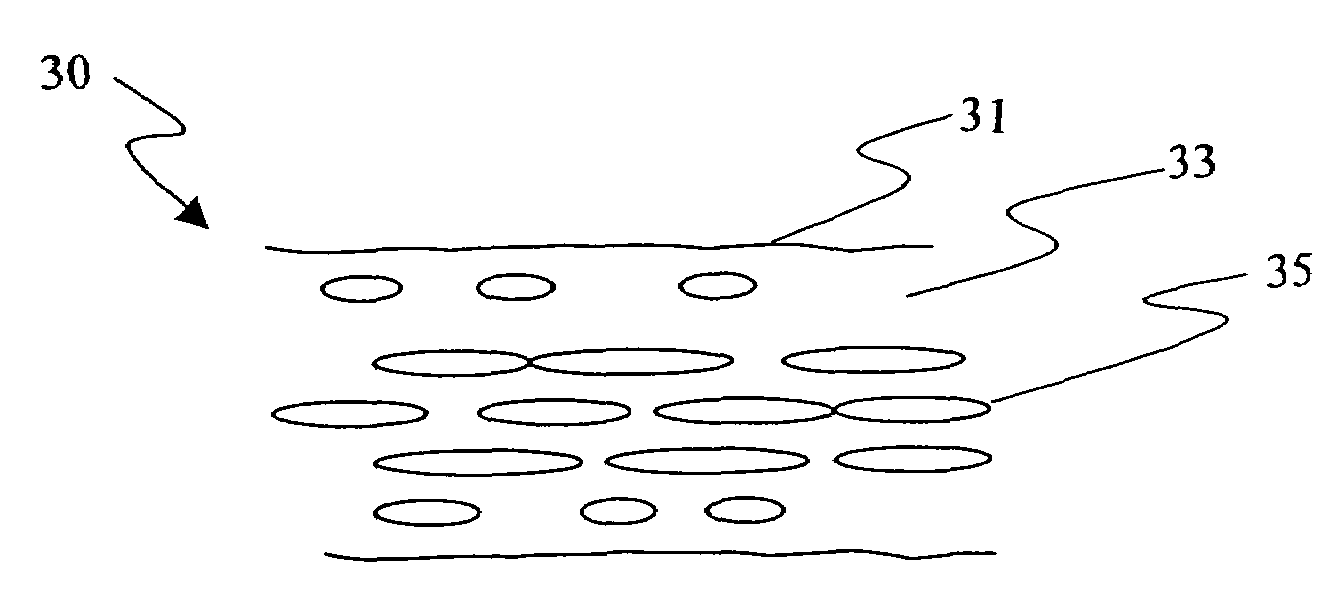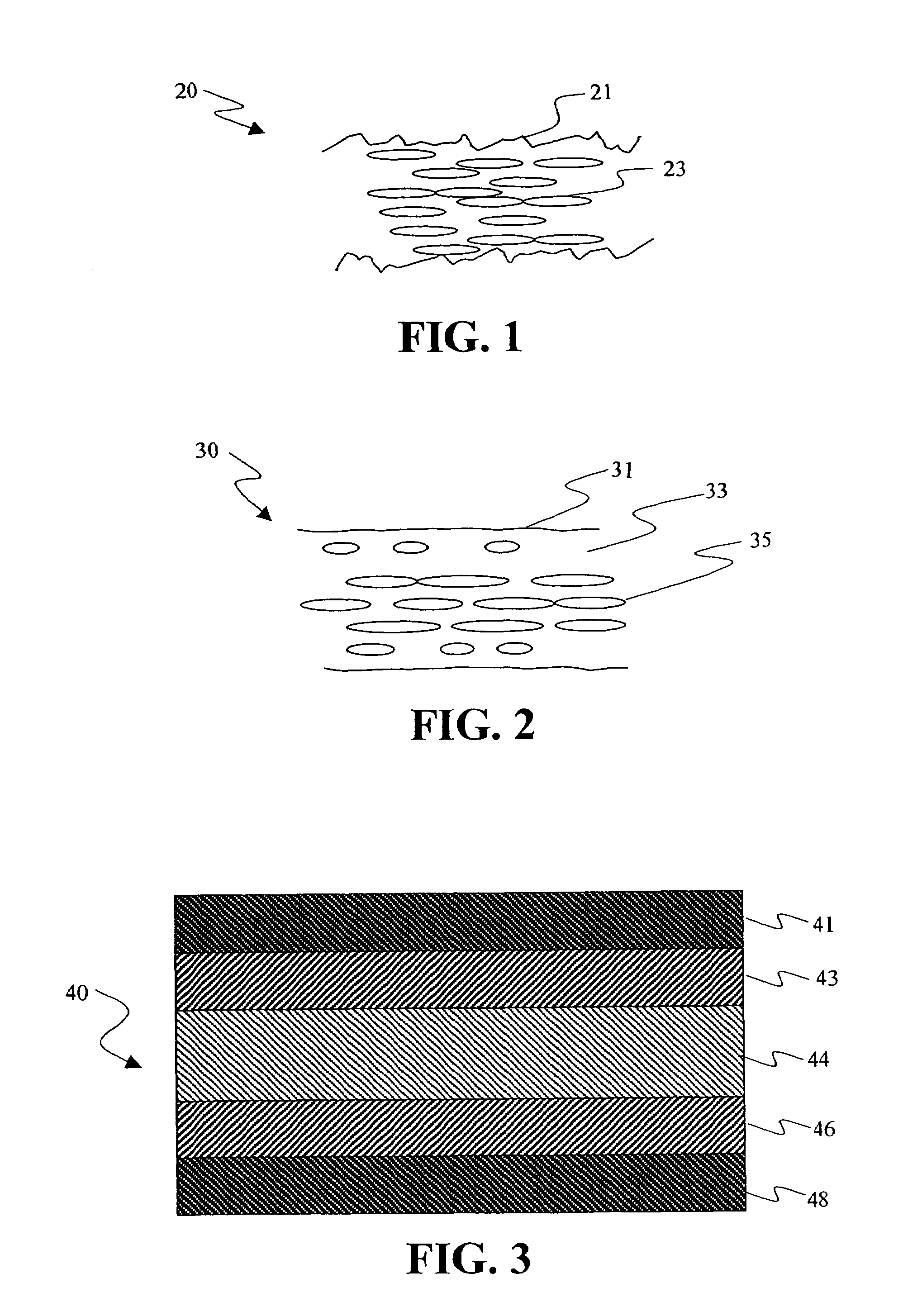Foam core imaging element with gradient density core
a technology of gradient density and support sheet, which is applied in thermography, instruments, photosensitive materials, etc., can solve the problems of low consumer acceptance, smudging and uneven print density, and suffer from image media, etc., and achieve excellent smoothness, superior support sheet, and high stiffness
- Summary
- Abstract
- Description
- Claims
- Application Information
AI Technical Summary
Benefits of technology
Problems solved by technology
Method used
Image
Examples
example 1
Control Foam Core
[0138]In this example, polypropylene foam of caliper 231.14 μm and density 0.54 gm / cm3 was obtained from a commercial source. This was then extrusion resin coated on both sides using a flat sheet die. The upper flange, on the face or imaging layer side of the foam, was coextrusion coated with two layers. The layer closer to the foam was coated at 12 gm / m2 coverage, at a melt temperature of 274° C., and comprised approximately 10% anatase TiO2, 20% Mistron CB Talc (from Luzenac America), 20% PA609 (amorphous organic polymer from Exxon Mobil) and 50% PF611 (polypropylene homopolymer—extrusion coating grade from Basell). The skin layer, that is, the layer furthest from the foam, was coated at 12 gm / m2 coverage, at a melt temperature of 300 C, and comprised approximately 18% TiO2, 4.5% ZnO, and 78.5% D4002 P (low density polyethylene from Eastman Chemical Company). The lower flange on the wire side of the foam was monoextrusion coated at 300 C melt temperature. The lowe...
example 2
Smooth Foam Element of Invention
[0139]Example 2 was a foamed polypropylene sheet with a basis weight of 574.5 gm / m2 and an average sheet caliper of 758.7 μm in which there was a near instantaneous control of the polymer's surface diffusion rate of the image layer side of the cast polymer sheet and then followed by bulk heat transfer on the balance of the sheet. This instantaneous control was accomplished by controlling the dimensionless time (t*) spent by the extrudate prior to its coming into contact with the high heat transfer surface. For this Example, the t* was approximately 0.013. The foam core sheet was made with a 90 weight %, of a low melt strength linear polypropylene from Huntsman corporation (P4G4Z-011) with a melt flow rate of 12 gms. polymer extruded / 10 min. and 7.5 weight % of high melt strength polypropylene (Dow D114.01) with a melt flow rate of 0.42 gms. polymer extruded / 10 min. The overall melt strength of the resin blend is less than 10 cN at 200° C. An endotherm...
example 3
Foam Core Without Gradient—Longer Distance from Die to High Heat Transfer Surface
[0140]Example 3 was a foamed polypropylene sheet using the same material composition as example 2 .The only difference was that quenching was done with the high heat transfer surface approximately 2.5 times further away from the die slot exit than that used to make example 2. The basis weight of the cast sheet sample was 577.31 gm / m2 and average sheet caliper was 771.65 μm. This cast sample was then oriented uniaxially using a stretch ratio of 6 using the same conditions as example 2. The core sample was then melt extruded with an upper and low flange as describe in sample 1.
PUM
| Property | Measurement | Unit |
|---|---|---|
| surface roughness | aaaaa | aaaaa |
| Ra | aaaaa | aaaaa |
| surface roughness | aaaaa | aaaaa |
Abstract
Description
Claims
Application Information
 Login to View More
Login to View More - R&D
- Intellectual Property
- Life Sciences
- Materials
- Tech Scout
- Unparalleled Data Quality
- Higher Quality Content
- 60% Fewer Hallucinations
Browse by: Latest US Patents, China's latest patents, Technical Efficacy Thesaurus, Application Domain, Technology Topic, Popular Technical Reports.
© 2025 PatSnap. All rights reserved.Legal|Privacy policy|Modern Slavery Act Transparency Statement|Sitemap|About US| Contact US: help@patsnap.com


